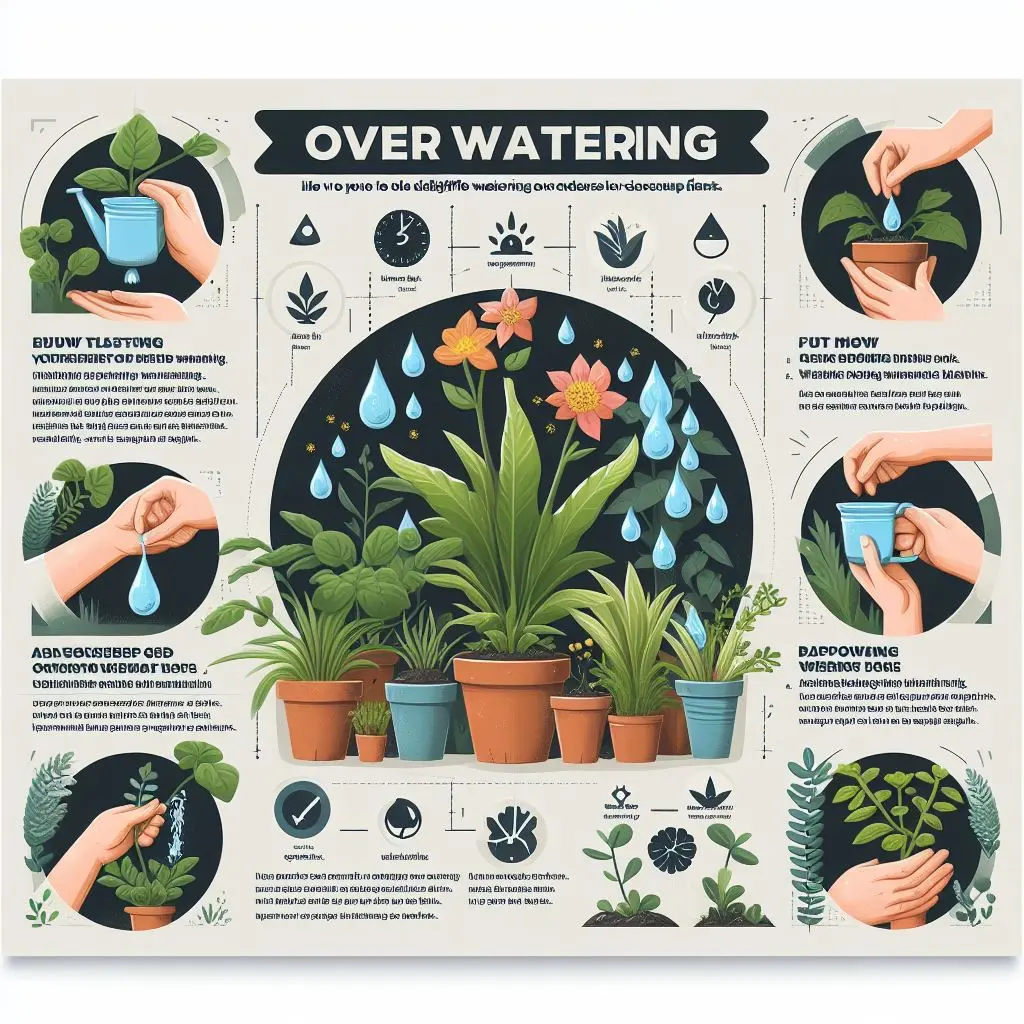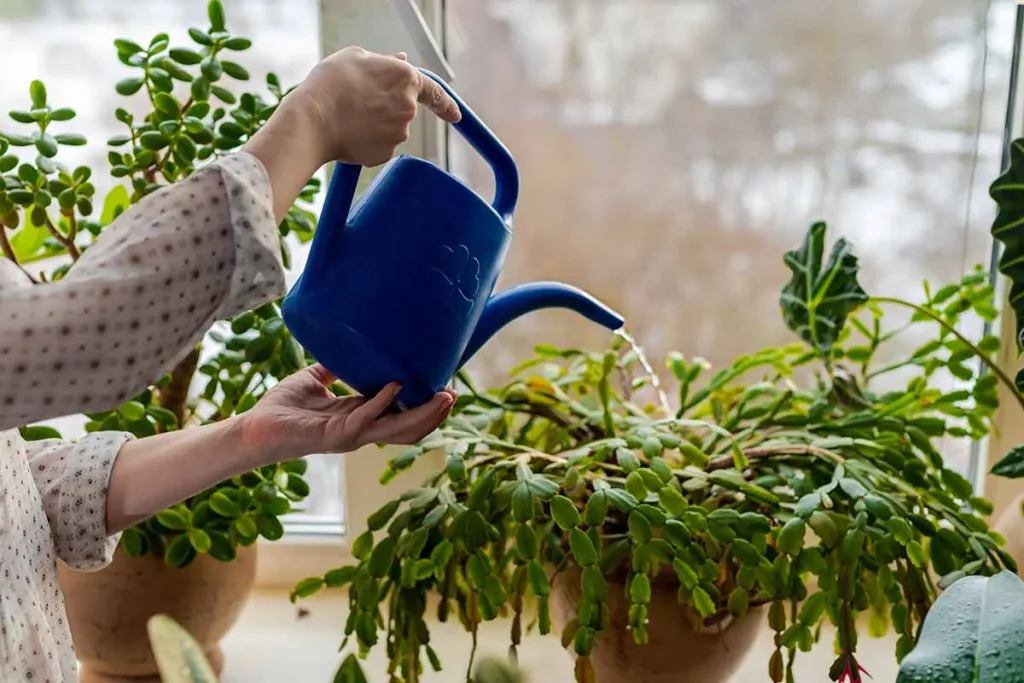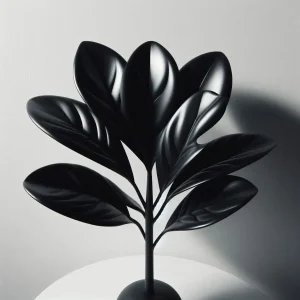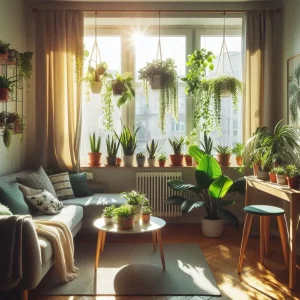In the following, you will become familiar with the best methods to rescue plants that have been overwatered
| Situation | Solution |
| Wilting due to overwatering | Reduce watering frequency and allow the soil to dry out. Check drainage and ensure proper moisture management. |
| Applying fertilizer before new sprouts appear | Wait until the plant regains health before applying fertilizer to ensure optimal effectiveness. |
| Wilting not caused by water deficiency; other issues suspected | Investigate the soil condition and overall plant health to identify and address any potential underlying issues. |
Recovering the Plant
Page Contents
ToggleThe initial solution to rescue overwatered plants is to allow the soil to dry in the sunlight. It’s worth mentioning that drying it in the shade might be a better option, as plants consume less water in the shade. If you notice the plant’s leaves turning yellow or light green, it indicates overwatering.
Sometimes, plant shoots may not be green but rather tend towards a brownish color, indicating the issue. Placing the plant in the shade can help address this problem.
Choosing the Right Pot for the Plant
Various pots are available in the market, and choosing the appropriate type is crucial. To ensure the pot’s suitability, you can rotate it and inspect its bottom. If drainage holes are present, you have chosen a suitable pot. Lack of these holes can prevent the plant from efficiently draining excess water.
Drying the Plant’s Roots
When a plant turns yellow due to overwatering, it should be removed from the pot. After taking it out, let it sit outside for a while. Removing a plant from the pot can be challenging, and to make it easier, tapping the sides of the pot can loosen the roots, making it easier to take the plant out.
read more: best plants for terrarium [13 most beautiful]
Checking the Soil Color

One effective way to rescue an overwatered plant is to examine the color of its soil. The soil color can provide valuable information about the plant. If the soil is brown, it signifies a healthy living environment for the plant. If the soil appears somewhat greenish, it indicates overwatering.
This issue occurs when water-loving algae settle in the pot, causing a change in the soil color. To save the plant, replace the soil.
Patience before Replanting
To rescue an overwatered plant, place it on a wire mesh and wait for a few hours for the roots to completely dry. This process will reveal any damage to the roots. If damaged, they will show a brownish color, while healthy roots remain white.
Trimming Rotten Root Sections
If you notice a change in root color from white to brown and signs of rot, it’s essential to trim only the affected parts before replanting. Only cut away the damaged sections.
Withholding Water until the Soil Surface Dries
Do not water the plant until you are sure of its water needs. Initially, check the soil’s dryness. If it feels like the soil is drying, give it a little water. Do not allow the soil to completely dry out. To prevent water overflow, you can use a saucer under the pot.
By following these steps, you can increase the chances of successfully rescuing an overwatered plant.”
How to Identify Overwatering in Plants?

A plant that has been excessively watered may exhibit behavior similar to a plant suffering from dryness. Distinguishing between these two issues is crucial. To investigate, first, examine the moisture level of the soil and check your plant watering schedule.
In addition to moist soil, we become familiar with the most important signs of overwatering in plants:
Wilting:
– One of the most common signs of plant dryness, but plants with closed stomata due to excessive watering can also experience this problem.
Soft or Swollen Leaves and Stems:
– The stems and leaves of a plant that has been overwatered may appear soft and swollen due to excessive water absorption.
Leaf Color:
– The leaves of an overwatered plant become excessively bright green, indicating overhydration.
Yellow or Brownish Shading of Leaves and Stems:
– Yellow or brownish discoloration of stems and leaves can also be a sign of overwatering.
Leaf Drop:
– Both old and new leaves may fall prematurely due to overwatering.
Brown Spots:
– Brown spots on leaves and leaf tips can indicate issues related to overhydration.
Excessive Growth:
– Abnormal and excessively rapid plant growth may be a result of overwatering.
Fungal or Mold Growth:
– The growth of fungi or mold on leaves, soil, and stems can be indicative of overwatering.
Presence of Powdery Mildew:
– The presence of powdery mildew, soil gnats, or other moisture-loving pests may suggest overwatering issues.”
Sterilize the container and scissors with the help of the epic gardennig website so that your plant is not damaged:
As unlikely as it may seem, the fungus that causes root rot can stick around on the pot or shears after use. Without cleaning the container, you risk reintroducing the problem to the affected houseplant, even if you’ve adjusted your care. The concern is worse for your shears, as you may unknowingly spread disease to completely different houseplants that weren’t a concern to start with.
FAQ
Does wilting also indicate overwatering in plants?
Yes, wilting is indeed a sign of overwatering. This happens because the plant starts to deteriorate(get worse) due to excessive watering.
Can fertilizer be applied to the plant before seeing new sprouts in these situations?
For fertilizer to have the maximum effectiveness for the plant, it is necessary for the plant to regain its health. It is generally recommended to wait patiently until the plant recovers its health before applying fertilizer.
If the wilting of the plant is not due to lack of water, what should be investigated?
If the plant is not wilting due to a lack of water, you should examine its soil and ensure its overall health.”







